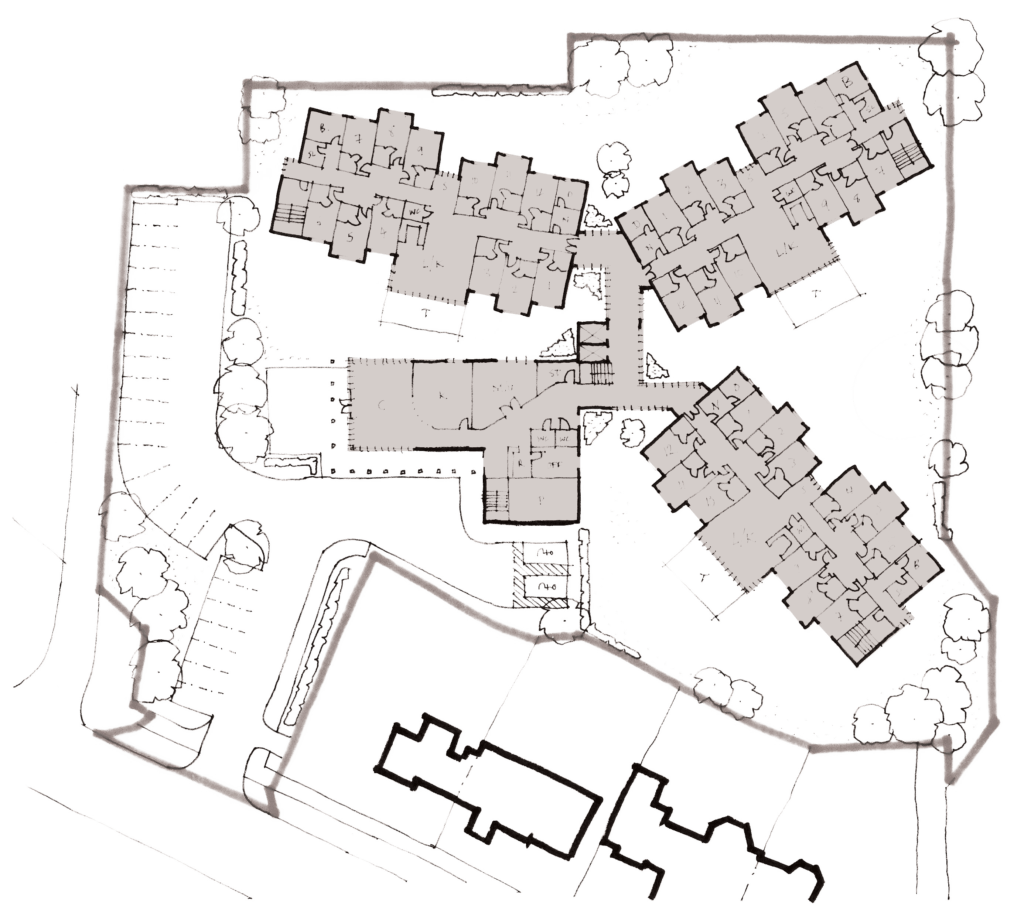Household Care Model
Substituting institutional design for smaller, typically domestic forms can create a more familiar setting which fosters a stronger sense of homeliness and encourages independence. This sense of normality, supported by the functionality of a specialist care home, provides residents with a home which can reduce levels of anxiety, confusion and distress, while providing high levels of support to suit resident’s needs.
By developing care homes which better reflect our normal way of life we can create a space which caters for varied levels of care, but also make the transition to a care home easier for people. This transition can often be a fraught process, and ways of making this easier can lead to residents more quickly enjoying a new way of life.
Small care groups can provide a more familiar environment, aiding residents comfort and fostering a sense of homeliness. The chance to interact with staff and other residents in more meaningful ways and providing varied and flexible opportunities to care for themselves, to the extent they wish to, allow residents to live in a more independent way. These changes can lead to greater happiness, a better quality of life and longer life expectancy.






